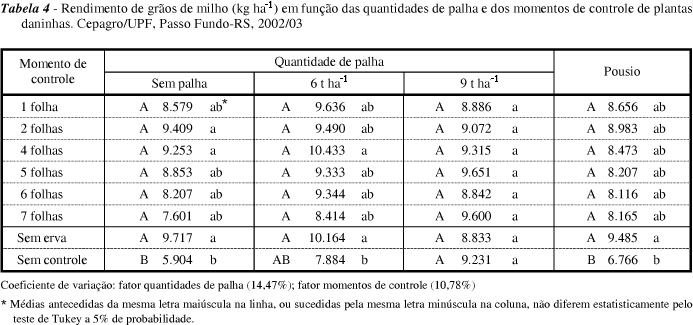The objective of this study was to evaluate the effect of the amount of turnip (Raphanus sativus var. oleiferus) crop residue on weed control in corn. The experimental design was a split-plot, in randomized blocks, with four replications. The treatments tested were 0, 6, and 9 t ha-1 of turnip crop residues, fallow period (the amount of residues was equivalent to the amount of natural vegetation residues), arranged as main plots, and six weed control periods (corn plants with 1, 2, 4, 5, 6, and 7 developed leaves), besides two controls (one without weeds and another without weed control), arranged as subplots. Interactions occurred between residue amounts and control periods in relation to the degree of weed control. The best control period was achieved when the corn plants presented from 2 to 4 developed leaves. Corn grain yield was higher in the control plots with no weed control than in the plots with 9 t ha-1 of turnip crop. Chemical control did not increase corn grain yield, when the amount of turnip crop was 9 t ha-1.
interference; plant cover; herbicide








